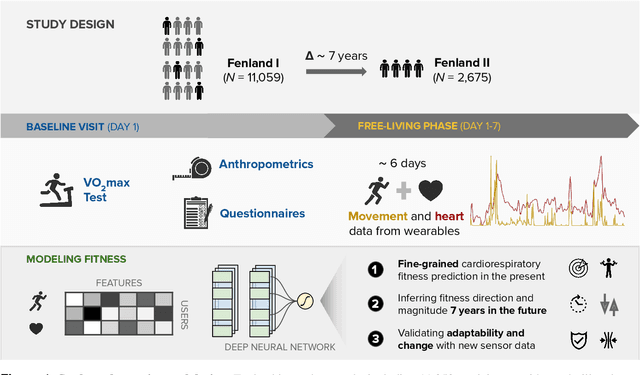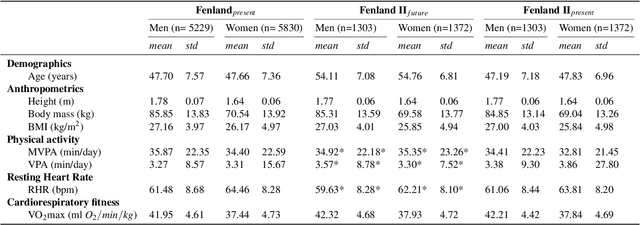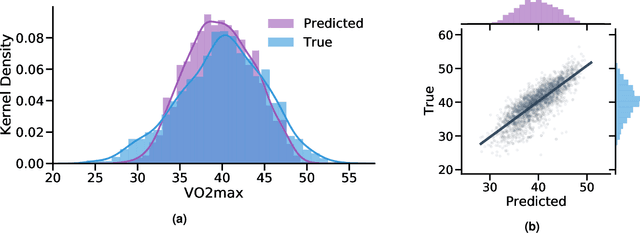Longitudinal cardio-respiratory fitness prediction through free-living wearable sensors
Paper and Code
May 06, 2022



Cardiorespiratory fitness is an established predictor of metabolic disease and mortality. Fitness is directly measured as maximal oxygen consumption (VO2max), or indirectly assessed using heart rate response to a standard exercise test. However, such testing is costly and burdensome, limiting its utility and scalability. Fitness can also be approximated using resting heart rate and self-reported exercise habits but with lower accuracy. Modern wearables capture dynamic heart rate data which, in combination with machine learning models, could improve fitness prediction. In this work, we analyze movement and heart rate signals from wearable sensors in free-living conditions from 11,059 participants who also underwent a standard exercise test, along with a longitudinal repeat cohort of 2,675 participants. We design algorithms and models that convert raw sensor data into cardio-respiratory fitness estimates, and validate these estimates' ability to capture fitness profiles in a longitudinal cohort over time while subjects engaged in real-world (non-exercise) behaviour. Additionally, we validate our methods with a third external cohort of 181 participants who underwent maximal VO2max testing, which is considered the gold standard measurement because it requires reaching one's maximum heart rate and exhaustion level. Our results show that the developed models yield a high correlation (r = 0.82, 95CI 0.80-0.83), when compared to the ground truth in a holdout sample. These models outperform conventional non-exercise fitness models and traditional bio-markers using measurements of normal daily living without the need for a specific exercise test. Additionally, we show the adaptability and applicability of this approach for detecting fitness change over time in the longitudinal subsample that repeated measurements after 7 years.
 Add to Chrome
Add to Chrome Add to Firefox
Add to Firefox Add to Edge
Add to Edge